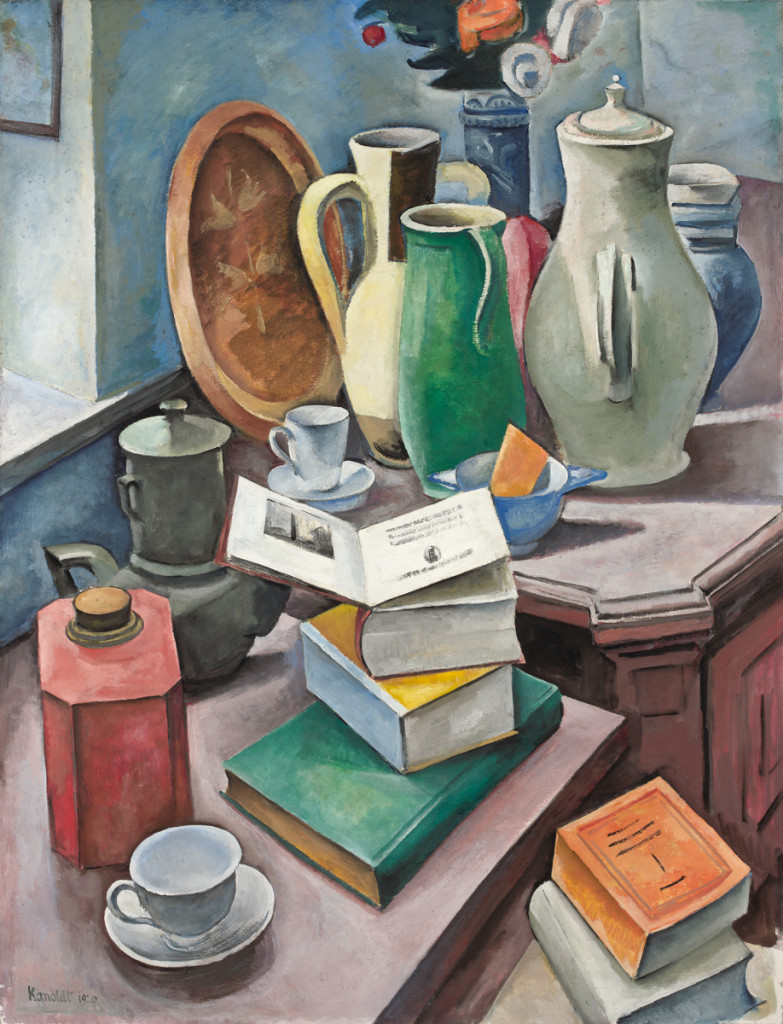Alexander Kanoldt (Karlsruhe 1881 - 1939 Berlin)
Still Life XII, 1920
Oil on canvas, 85,6 x 64,2 cm
Signed and dated lower left 'Kanoldt 1920' and inscribed on the stretcher 'Kanoldt 1920 / XII no. 128'
Provenance:
Dr. Pfeiffenberger, Mannheim
Julius Baer, Munich
Sotheby's, London, 8-9 December 1997, lot 75
Private collection, North Rhine-Westphalia
German private collection
Literature:
Die Horen 2, 1926, fig. 41
Brigitte Fischer-Hollweg, Alexander Kanoldt und die Kunstrichtungen seiner Zeit, Diss., University of Bochum 1971, p. 37
Exhibited:
Neue Secession, Munich 1920
'Alexander Kanoldt: Gemälde, Zeichnungen, Lithographien', Museum für neue Kunst, Freiburg, 14 March-26 April 1987 and Von der Heydt-Museum Wuppertal, 17 May-5 July 1987, no. 32, repr. in colour (titled Stilleben XII) and repr. p. 20
'Neue Sachlichkeit' - usually rendered in English as 'New Objectivity' - was the outstanding modern realist movement in Germany of the 1920s - the Germany of the Weimar Republic. It permeated many areas of cultural life - architecture, film, photography, literature and above all, art. The term was coined by Gustav Friedrich Hartlaub, the director of the Kunsthalle Mannheim, who staged a major exhibition of post-Expressionist art titled 'Die neue Sachlichkeit' in 1925. Neue Sachlichkeit is conventionally subdivided into three stylistic categories - verism, classicism and Magic Realism. Alexander Kanoldt's work displays both classicist and Magic Realist tendencies.
Still-life painting was one of the principal genres in the Neue Sachlichkeit movement and it is closely associated with Alexander Kanoldt's name. In most of his still lifes he depicted utilitarian objects, many of which mirror contemporary aesthetic taste.
The present painting is one of an important group of still lifes executed in 1920. It occupies a key position in his oeuvre. It shows him focusing on a number of different artistic objectives. It combines close attention to the accurate representation of objects - very characteristic of Neue Sachlichkeit - with the intention to study and represent a visual image of true reality hidden behind the reality of objective experience. Kanoldt and his friend Georg Schrimpf had begun to develop an interest in this following the First World War. Kanoldt was to extend it further in the company of Adolf Erbslöh on an extended visit to Italy. Here the two painters came into contact with a group of post-Futurist artists, among them Giorgio Morandi and Giorgio de Chirico. Both were contributors to the Italian periodical Valori plastici which was a proponent of 'Pittura Metafisica' - 'metaphysical art'- and advocated a return to classicism and order. The classicist handling of the present painting, the richness of the palette and its extraordinary luminosity allude to Italy - and almost certainly to the metaphysical art of de Chirico and Morandi.
There are signs of human presence among the objects in the painting - a coffee cup and an opened book. The faintly delineated lettering on the cover of the uppermost book in the lower right corner of the painting seems to suggest a schematically sketched human face.
Kanoldt and Max Beckmann were the top two contributors to the 'Neue Sachlichkeit' exhibition in Mannheim in 1925.
Dr. Michael Koch has examined the painting and describes it as a fine early still life of museum quality. He will be including it in his forthcoming catalogue raisonné of Kanoldt's paintings.

